International ceramics has lost an important artist and Cfile has lost an exceptional friend and supporter; first-generation Navajo ceramist, Christine Nofchissey McHorse passed away in Santa Fe, New Mexico, from complications due to the Coronavirus on February 17, 2021. She was 72 years old.
McHorse was born in 1948 in the mining town, Morenci, Arizona. She never lived in the Navajo Nation and because her parents were the last generation to be forcibly removed from their homes and placed in boarding schools, essentially re-education camps to remove Indian culture, she learned more about Zen and Rosicrucians than Navajo lore and language.
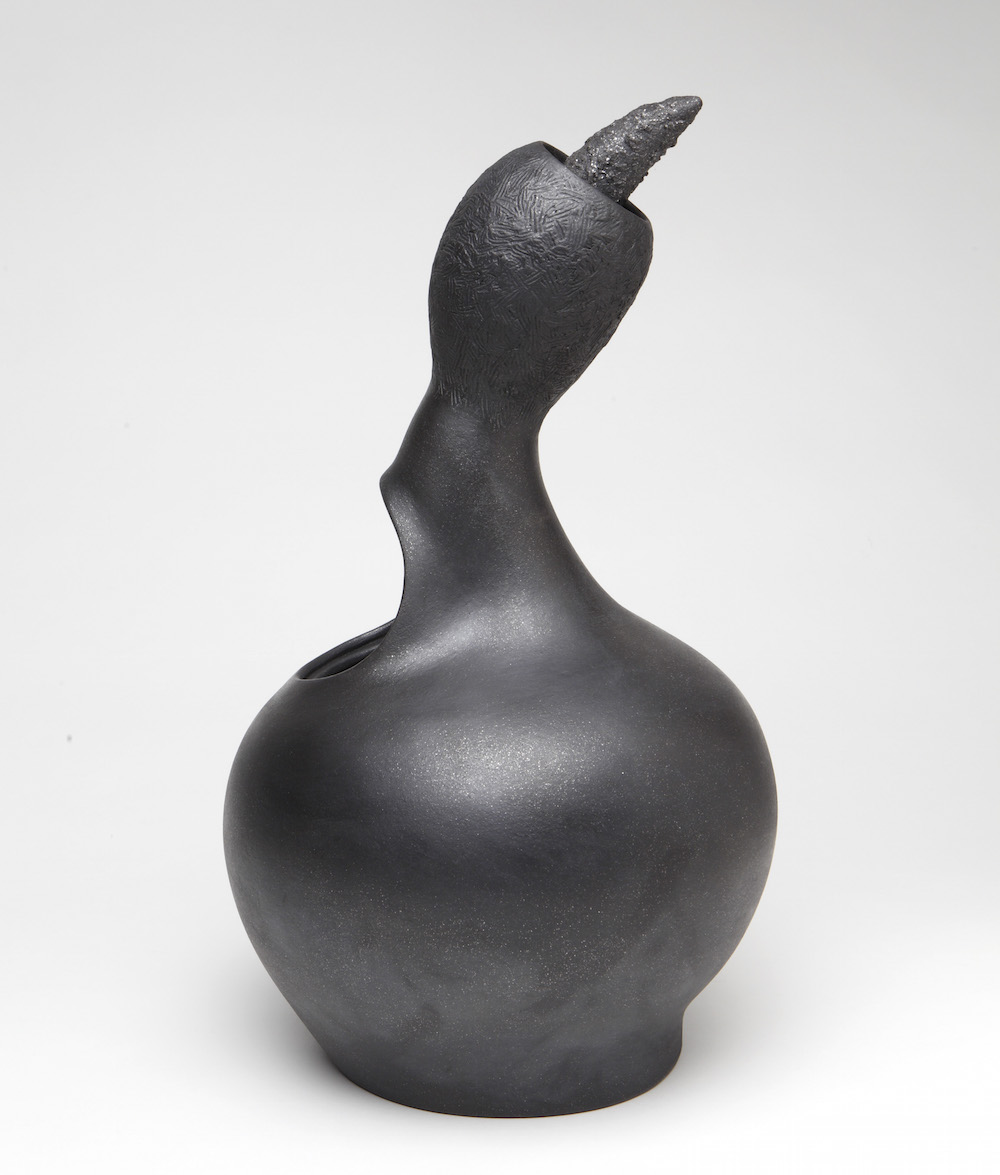
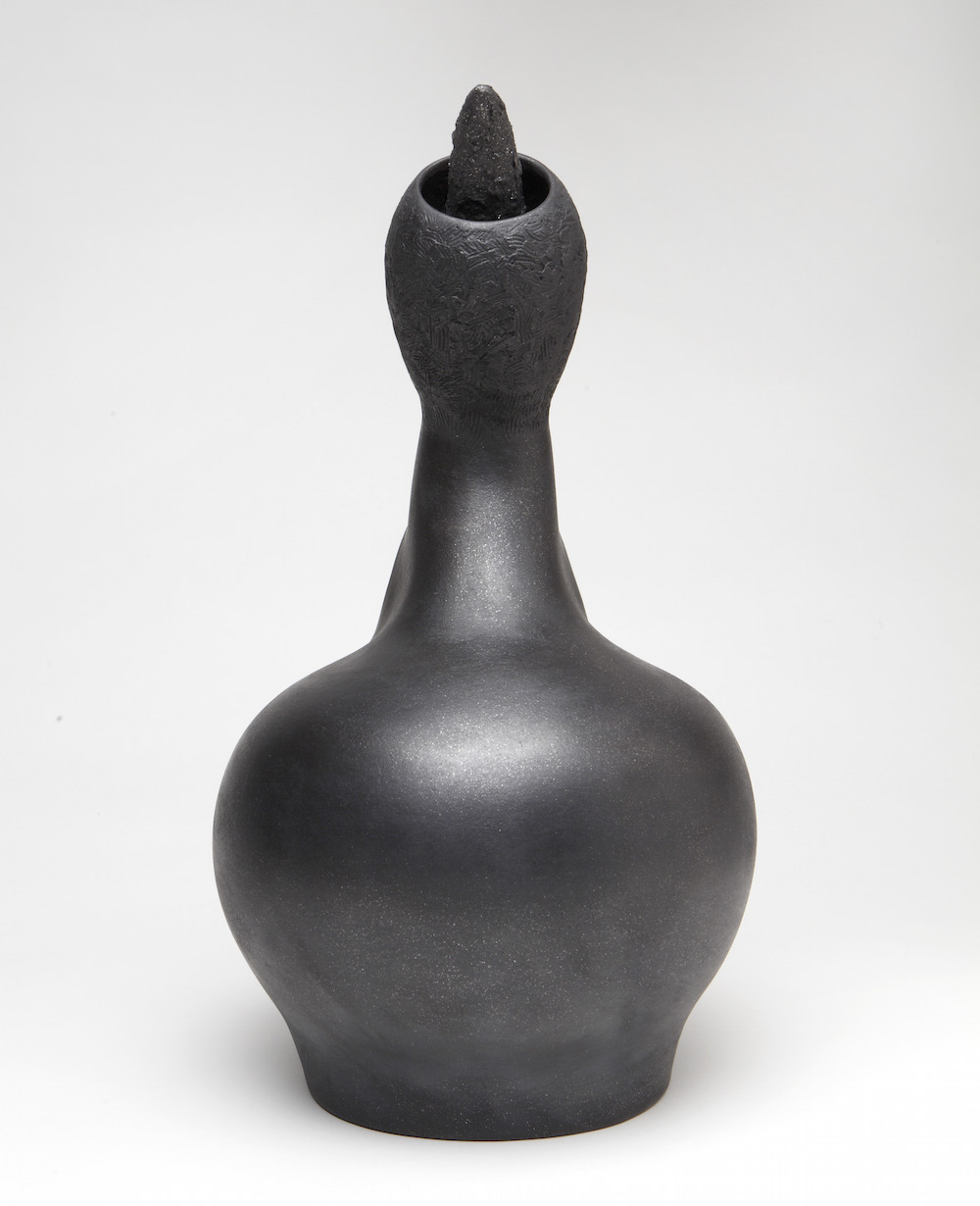
She received her formal education at the Institute of American Indian Arts, where she studied art between 1963 and 1968.
There she met and married Joel McHorse, a Taos Pueblo Indian, and his grandmother, Lena Archuleta taught her to make pots with micaceous clay, a rare, but naturally occurring clay that is high in mica content found on the Taos mountainsides.
She excelled and soon developed a reputation for thin-walled finely coiled vessels, sometimes with relief carving but always without surface painting. She began to work in a sculpture mode as well and had the unique distinction of winning Best in Show for both pottery and sculpture at the annual SWAIA Santa Fe Indian Market.
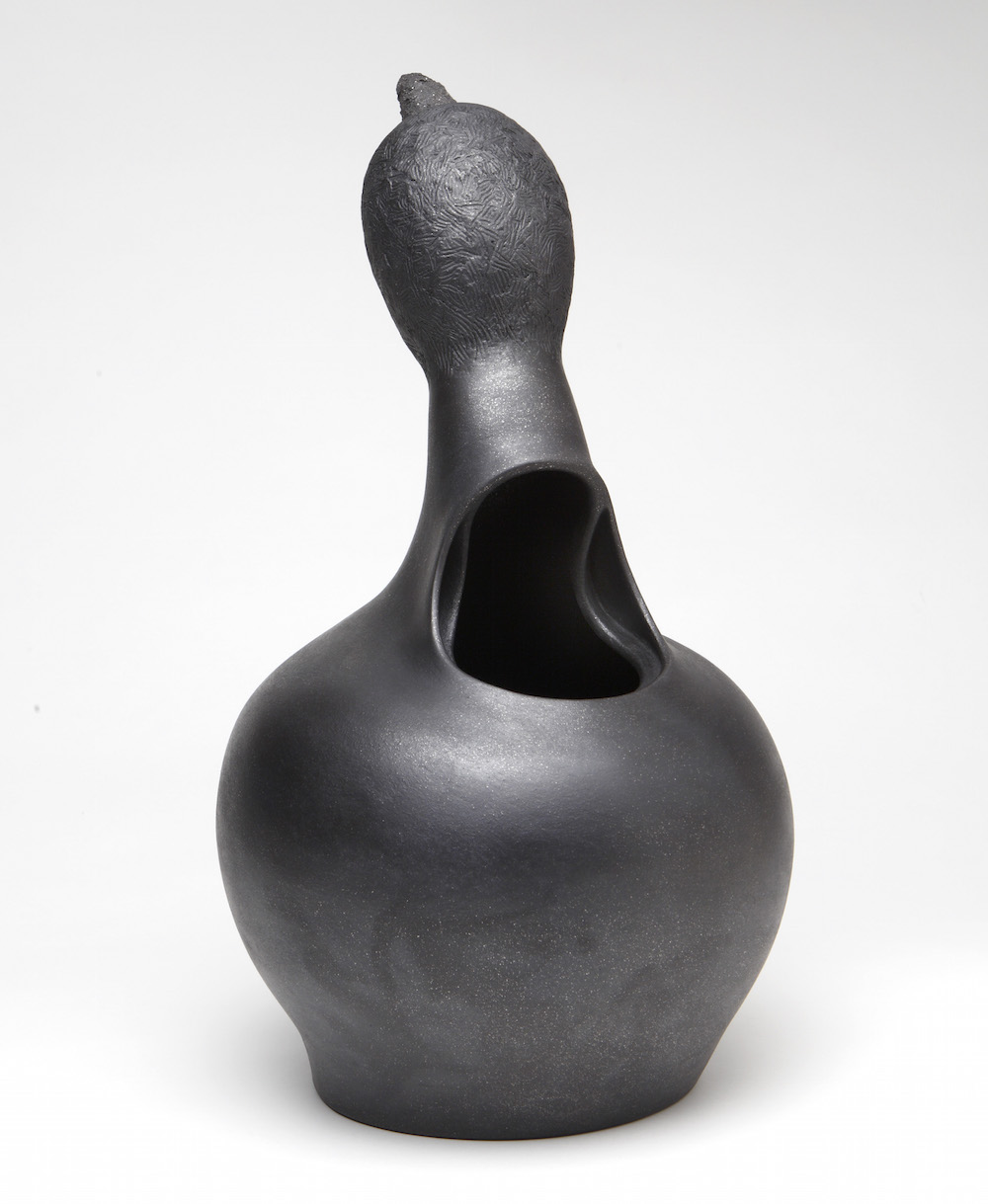
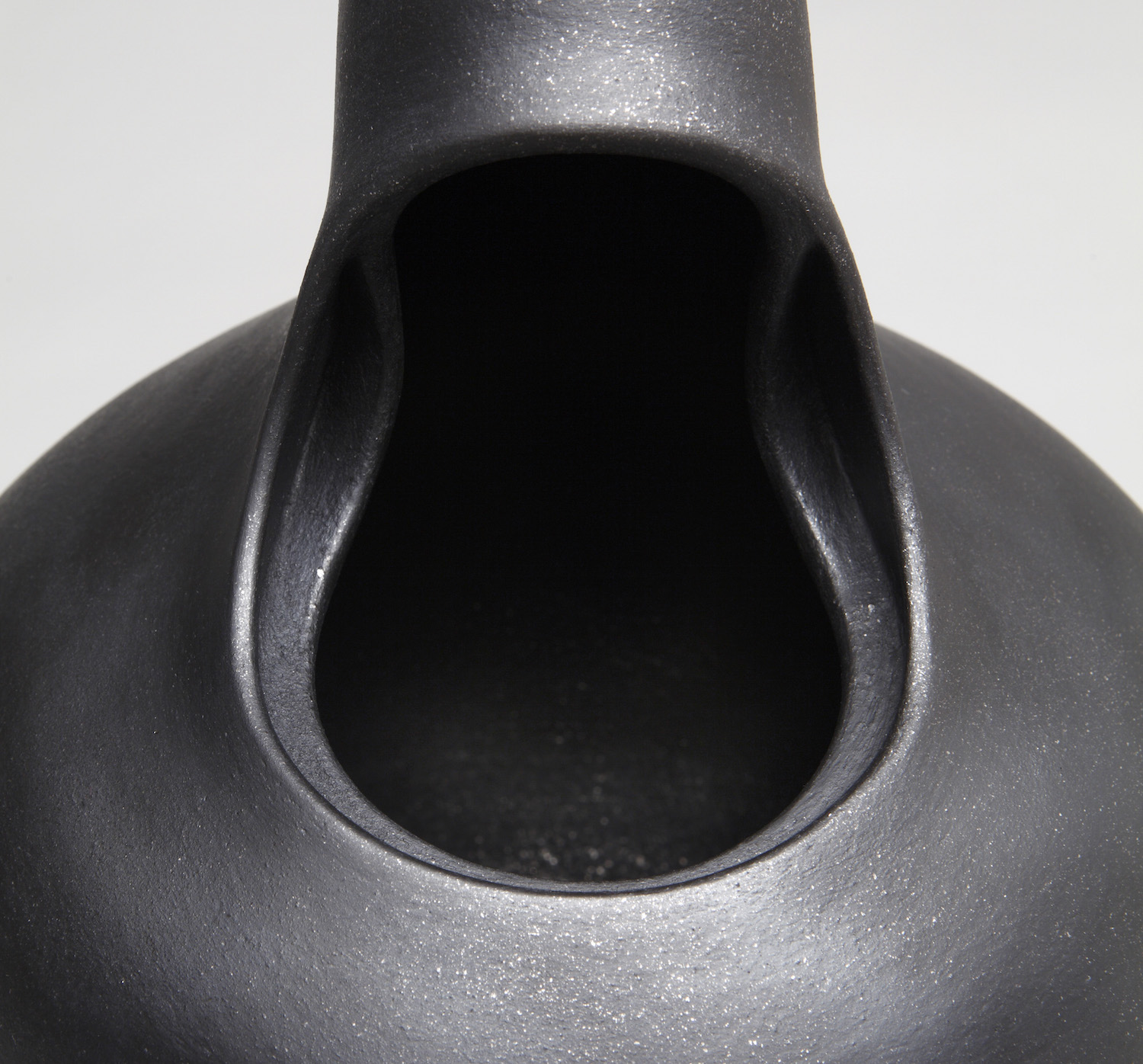
It was this pairing of two disciplines that began to inform new work, rooted in the vessel but liberated by sculpture’s broader free-form horizons.
McHorse gives each piece its own unique skin by pushing the boundaries of her raw material. The micaceous clay she used permitted McHorse to build thin-walled structures that withstood high temperatures, and if denied oxygen at the end of a firing yieled a black satiny finish.
The darkness of the fired clay provides a dramatic contrast to the tiny bits of reflective mica, glistening as light dances across each piece. Using light gradation as her palette, McHorse controls the presence of light by creating differently textured surfaces that either absorb or reflect the light. When combined with the elegance of each sculpture’s form, McHorse’s works offer a captivating glittering light show.
The forms were largely without precedent in traditional Indian pottery. Each vessel had a singular architecture that was not repeated. McHorse would make an exact drawing of what she wanted the artwork to become, sometimes with interior “plumbing” or tubes that supported the shape and “then I would decide where to begin the coiling, the bottom, the middle or the top.”
McHorse’s sketches were transformed into voluminous shapes that swell upwards like a natural spring. Dismissing the rudimentary forms that have come to define Native American ethnic identity in craft, she turned to primordial shapes, akin to the modern aesthetic of Henri Moore and Constantin Brancusi serving the spiritual power and movement of water, air, and earth.
This new work was poorly received by the Native pottery collectors. It did not carry the high dosage of nostalgia that most Native pottery offered. After the work failed to find support McHorse left Indian Market. “I need an arena in which my new voice could be heard”, she said. And that venue was just about to arrive.
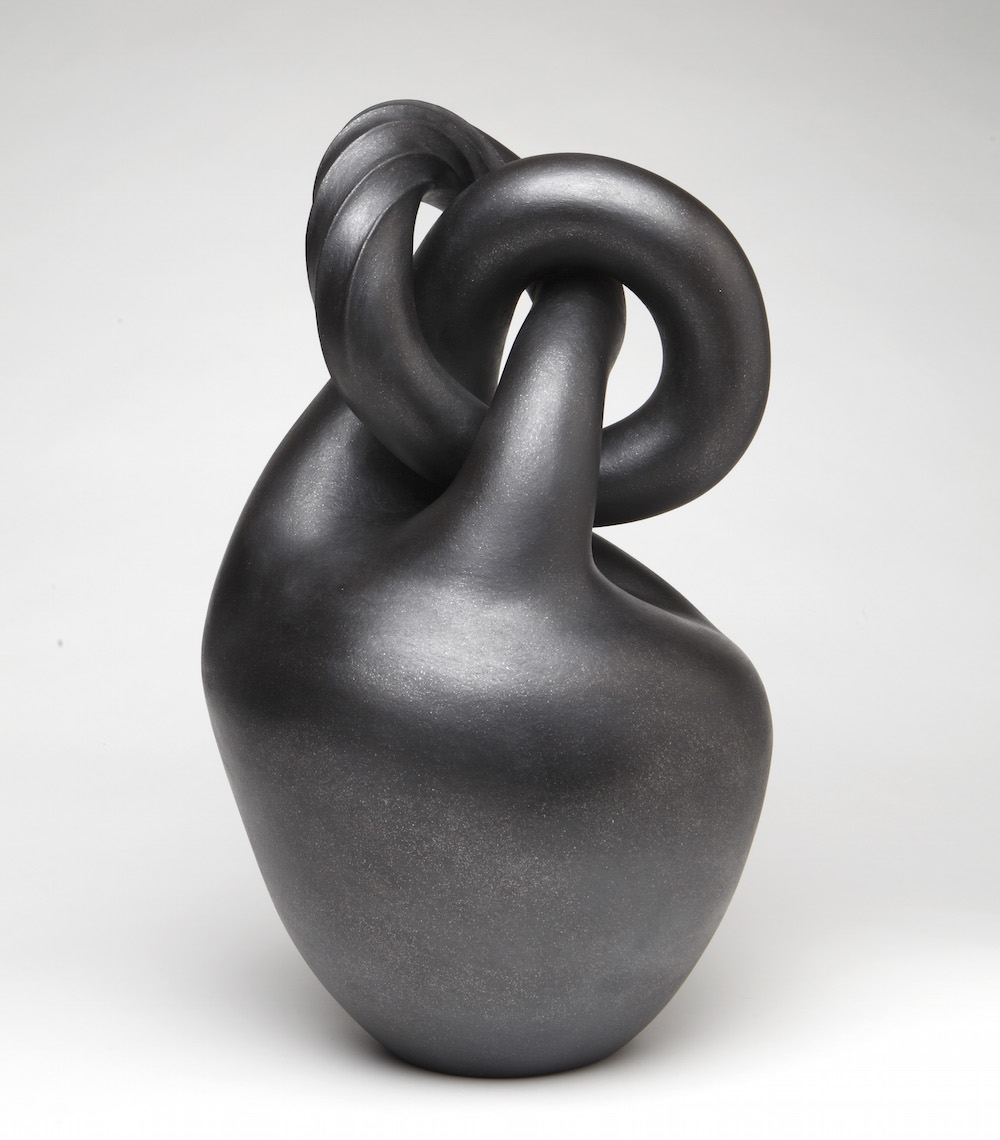
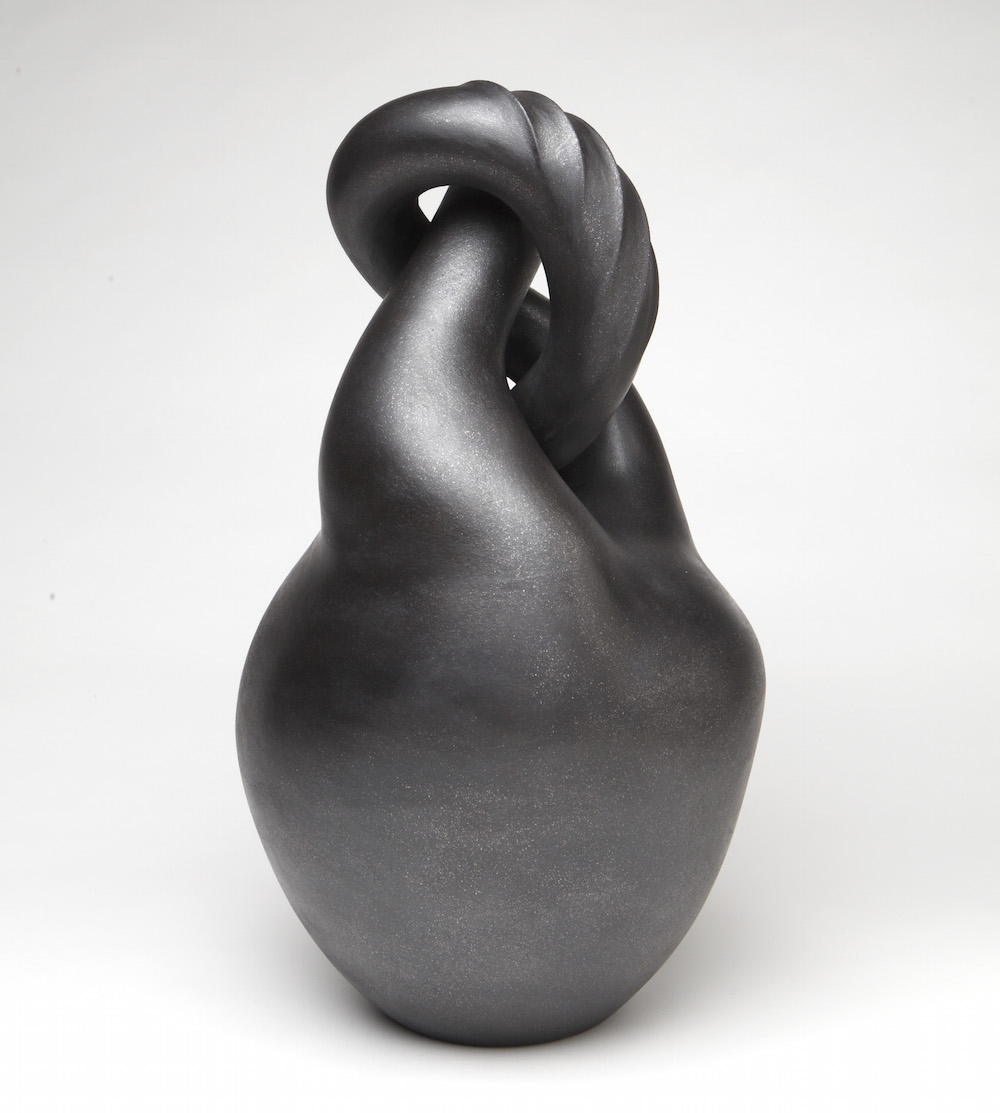
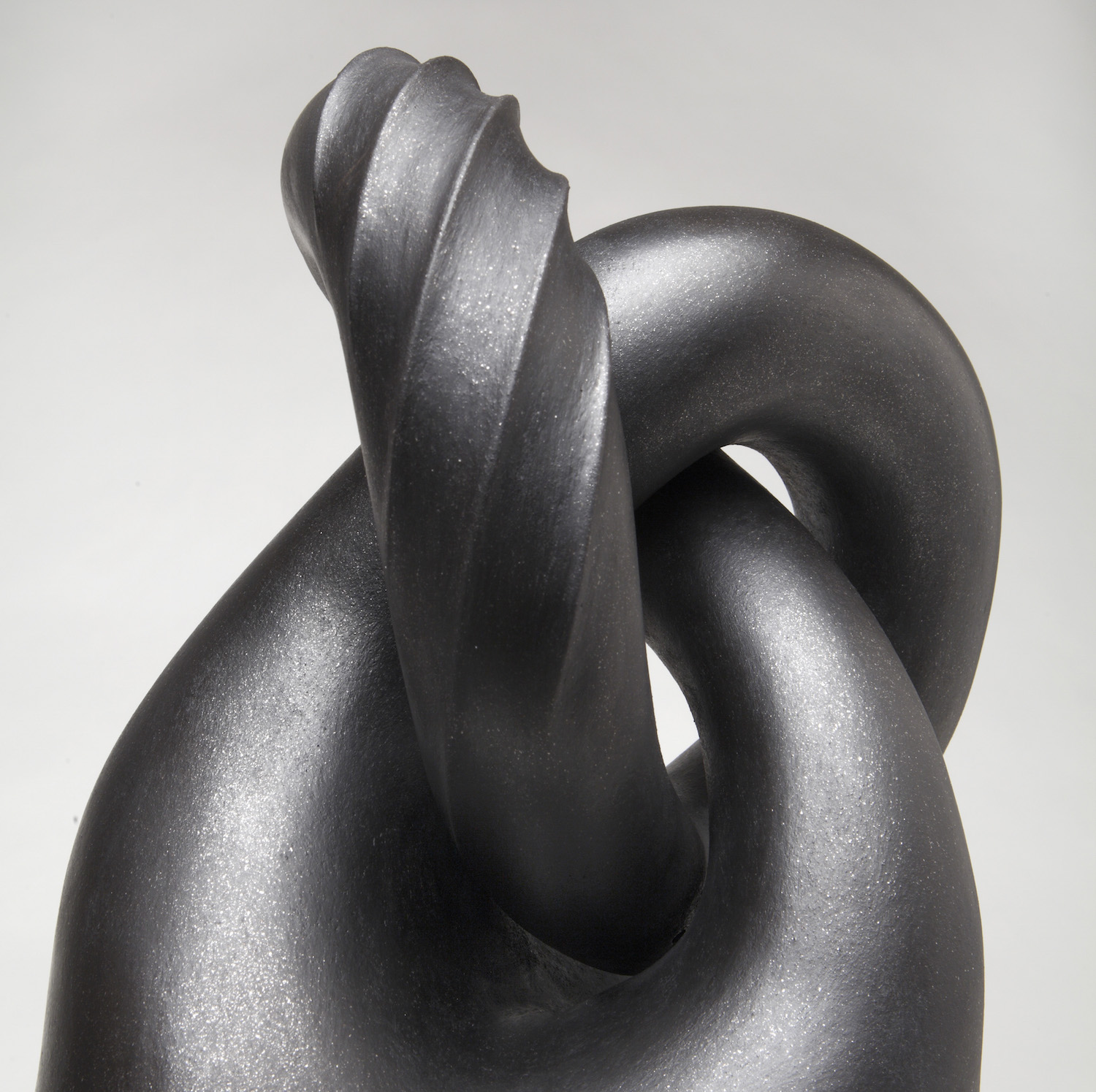
In 2002, New York art dealers, Garth Clark and Mark Del Vecchio attended the opening of the exhibition in New York, Changing Hands: Art without Reservation at the then American Craft Museum (later the Museum of Arts and Design) and they saw a work by McHorse that sent them flying to Santa Fe to meet the artist.
It was love at first sight, not just for Christine but her husband Joel, their family and of course, her art. One can add Santa Fe to that list, through frequent visits and the McHorse family hospitality, the dealers eventually decided to move to this town after they closed their gallery in 2008.
Clark and Del Vecchio organized exhibitions of her work in New York and Europe, and museums and private collectors of contemporary art on several continents snapped up her pieces.
Once in Santa Fe, Clark and Del Vecchio organized a two-year traveling exhibition, Black Light: The Micaceous Ceramics of Christine Nofchissey McHorse(2013-2015), comprising the finest of the black works. The book that accompanied the show, received a major book award, the IPPY Bronze Medal for Fine Art from the Independent Publishers Association, not for craft as one might have expected. The fact that the Silver Medal was shared by Whitney Museum of Art and the Metropolitan Museum of Art, gives an idea of the competition! The IPPY welcomed McHorse to a high art club that few ceramists and almost no Native makers are ever invited into.
McHorse’s death is personal for Cfile. A dedicated supporter, she was a friend to every member of the Cfile team over its eight years. With her husband, Joel, she attended all local Cfile events and assisted in fundraising, we all feel her loss, and intensely so.
McHorse’s passing leaves a powerful legacy, both her large early body of traditional wares and her smaller later group, the Black Series, her true contemporary art. But she also threw down a challenge for others to follow in her path.
The success tells us many things are possible. One can escape strictures of traditional pottery and totally reinvent. One can do it when one is ready when becoming an innovative force may seem unlikely. Christine was 50 years old when she began the black work. One can escape the limits of ethnic stereotyping. One can escape ceramic’s low stature though that is now, happily changing dramatically. McHorse did all of this with elegance and was working on further breakthroughs when she left, innovating to the end.
Learn more about Christine McHorse in Cfile.
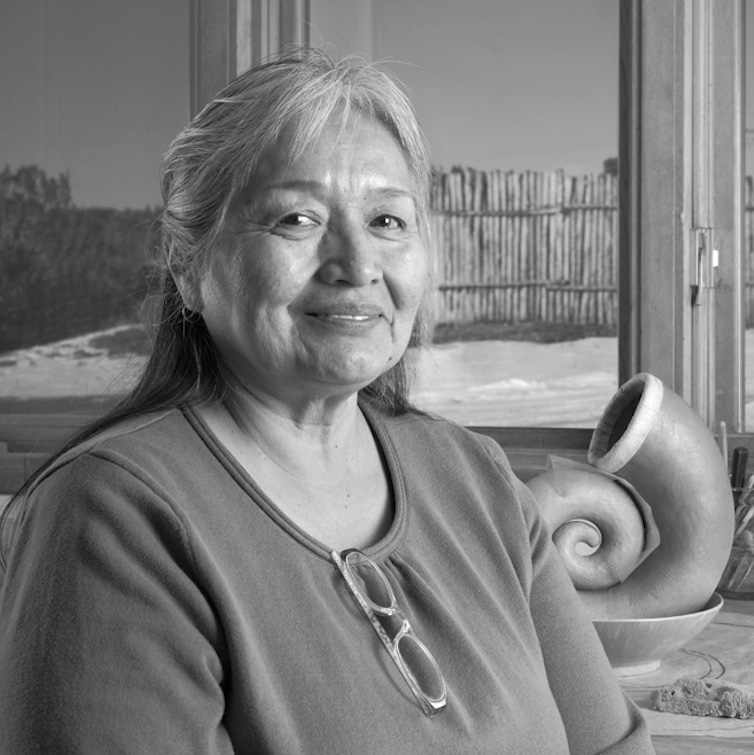
I was lucky to be able to hear the artist speak on a panel, during the “Black Light” exhibit at the Institute of Contemporary Native Arts, with the curators of the show. The exhibit opened my mind as a Clay artist long inspired by ancient Pueblo pottery. Thank you for your relationship & promotion of Christine, then and now, and, alongside those many others who have passed from Covid, may her work live on, and her memory be a blessing.
Such an exquisite body of work, she was an amazing artist, my sincere condolences to you all.
This is a true tragedy, both on an artistic and human level. My deepest condolences to her wonderful family, and to Garth and Mark.
Very sad. We lost a splendid artist. Such beautiful work.